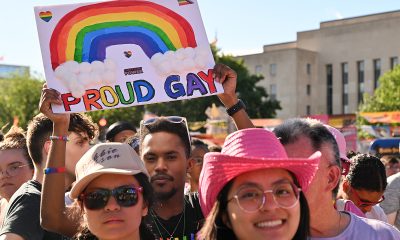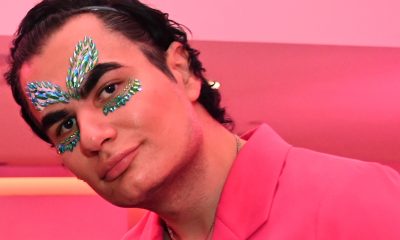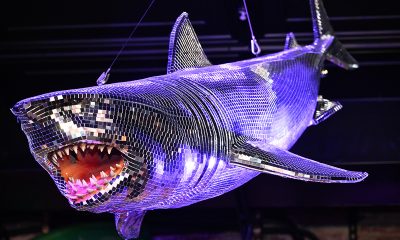a&e features
Asia O’Hara interview: the Queen has arrived
‘Drag Race’ season 10 favorite readies Capital Pride headlining appearance

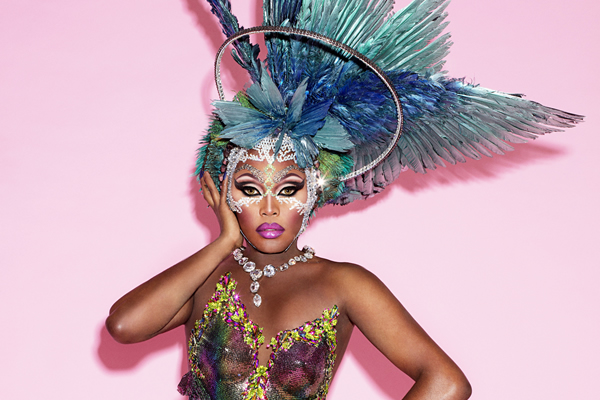
Asia O’Hara says experience helped her go far on ‘RuPaul’s Drag Race” season 10. (Photo courtesy Project Publicity)
Asia O’Hara
Capital Pride Concert
Sunday, June 10
7 p.m.
Capitol Concert Stage
3rd and Pennsylvania Ave., N.W.
Free admission
Asia O’Hara took home the titles for Miss Gay USofA in 2007, All American Goddess 2012 and Miss Gay America 2016 but still had to audition three times to compete for the crown on “RuPaul’s Drag Race.”
Hailing from Dallas, the 35-year-old veteran drag queen has now fought her way to the final five on season 10 of the drag competition show and secured her spot as a headliner of the Capital Pride Concert.
O’Hara will perform at the Capital Pride Festival/concert at 7 p.m. on the CAPITOL Concert Stage (3rd & Pennsylvania) as part of the HOT 99.5 event. It’s free. Details here.
Speaking with the Washington Blade, O’Hara dished on who she thought went home too soon, the truth behind reality show editing and what it was like getting slapped by RuPaul.
WASHINGTON BLADE: In the beginning of the season you went out of your way to help the other queens during one of the challenges and didn’t leave time for yourself. Do you regret doing that now?
O’HARA: Not at all. My viewpoint in competition is a little different than others. I feel like as long as you make it to the next week, it’s a win. Although it was scary to be that close to the bottom, once I realized that I was not lip-syncing or possibly going home, then I was fine. It’s like an investment. Sometimes it’s risky and it’s scary at the moment but once you realize that you’re going to be fine and it paid off, then there’s no sense in regretting the risk that you took.
BLADE: Why do you think the judges didn’t connect with your Beyoncé impression in Snatch Game?
O’HARA: The entire goal of the Snatch Game is to make Ru and the judges laugh. Beyoncé is not somebody that is known for being comedic. On top of that, she no longer does interviews, so it’s hard for people to connect with her personality because people don’t really know her personally. I thought that since her personality is ambiguous it gave me a lot of room to play and do whatever I wanted. Some people that are celebrities just have infectious personalities and they’re successful primarily because people just love them and their personalities. She, unfortunately, is probably not one of them. She’s a celebrity because of her talent. I think that’s why the judges had trouble connecting with her.
BLADE: You were one of the only people that broke down the Vixen’s wall and said you understood where both she and the others were coming from. Did you feel like she heard you?
O’HARA: Absolutely. I know for a fact that she did. It’s one of those things where approach is everything. I know that she heard me and understood where I’m coming from. I think that I just acknowledged that I understood what she was saying and didn’t think she was just bat crazy is what gave her the ability to be openminded with what I was saying.
BLADE: What’s your relationship like with her now?
O’HARA: It’s great. We don’t talk all the time but we text back and forth about funny stuff and talk about our goals in the future. Every time we see one another we hang out. I was recently in Chicago, which is where she lives, and she came out to the show and we hung out in the dressing room. Honestly, it’s no different than how it always was. Other than that brief moment where she was obviously upset that I said her name for who I thought should go home. But we’ve always had a great relationship.
BLADE: Where do you get your life wisdom from?
O’HARA: I don’t think that I’m wise. I was older than everybody. I think that’s just how that works. Mayhem (Miller) and I were the two oldest contestants. “Drag Race” was a new avenue for me but I’ve done drag in multiple facets of the community. Pageants, being a showgirl, being a backup dancer, being a show director, doing charity drag and now a reality show. So I’ve seen drag from multiple points of view. I think it’s sometimes easier for me to understand and communicate in the world of drag because I don’t have just a one-sided perspective of what drag is or should or should not be.
BLADE: Another memorable moment in the season was when you got accidentally slapped by RuPaul. What was that like?
O’HARA: To be honest, it was quite fun because it was so great to see her so concerned. She legitimately for a split second was concerned that I was hurt. She didn’t know what direction that was about to go in. That to me was the funnest part just to see how nervous she was. She was like, “Oh my god is she about to act a fool? Are we going to have to go stop the cameras so she can see the medic?” That was the funnest part for me because she’s completely in control of every aspect of the competition. So to see her in that brief moment not know what was about to happen was quite refreshing.
BLADE: How do you feel about the way the show has been edited versus how it felt in the moment? Do you think you were fairly represented?
O’HARA: I think everybody is always fairly represented. People love to say that editing changes things. They basically take two or three days worth of filming and condense them into 78 minutes of footage. I feel like everything has been completely accurate for me and everyone. There were times I was terrible in the competition and it accurately showed that. There were times I was great in the competition and it was accurate as well. The editing has been exactly how I remember things happened.
BLADE: Was there anyone that you felt went home too early?
O’HARA: Absolutely. Now, when I say someone went home too early I’m saying they had more to offer the competition. I’m not saying I don’t feel like they deserved to go home based on what they presented that week. But two people I saw going further in the competition were Blair St. Clair and Monét X Change. Blair was one of the only people that on day one I thought to myself, “Clearly, she’s top four material.” I was really shocked when she went home close to halfway through. Monét X Change also had some great moments. I was surprised that she didn’t make it. Not initially, but as I got to know her and see her talent level, she was another person I could see making it to the end.
BLADE: Speaking of Blair St. Clair, how did you feel when she opened up about her sexual assault? Did it just come out of nowhere?
O’HARA: It didn’t come out of nowhere. The lead question that prompted that may have gotten missed I don’t recall how that happened in person. As we got to know Blair personally, we knew that there was something there. Unfortunately, what you don’t get to see on television, in any reality competition, is sometimes just being in the same room with someone and having a conversation with them you feel like you need to ask them, “Something else on your mind?”
BLADE: Aquaria is one of the younger queens. What was it like watching her approach the competition as a more seasoned queen?
O’HARA: It was great. The thing about Aquaria is that although she’s young, she’s more mature than most 21-year-olds and more mature than I was at that age. She’s very talented. It’s refreshing to see someone so young, so talented and so self-aware about their art. Of course when I found out how old she was I didn’t know what to expect. But as the competition progressed and I got to know her I was thrilled to know she was only 21.
BLADE: Was there any moment that didn’t make the cut featuring you that you wish viewers had seen?
O’HARA: Not really. There are more moments that I forgot happened that I was pleasantly surprised with. One logistic thing that probably just wouldn’t have made sense on television is that during the “Breastworld” challenge when I was playing the Para Salin character, the first half of that challenge they went through multiple times. I was sitting on the sidelines for probably 45 minutes before it got to my part because I was the last character to enter the scene. When I entered the scene the judges just erupted into laugher because I think they forgot I was even there because I was off to the side while they were working with the other girls. I thought that might make the cut but it probably was something production wise than it was an actual piece of the story. I think Michelle (Visage) even said “Oh my god, I completely forgot you were sitting over there.”
BLADE: What can people expect from your Capital Pride performance?
O’HARA: I call myself a chameleon queen. I don’t travel around the world presenting the same creative ideas that I presented in the competition because I feel like people like to be surprised and like something fresh and new. People can expect to be pleasantly surprised and see something that is authentically Asia but not something they’ve seen already on television.
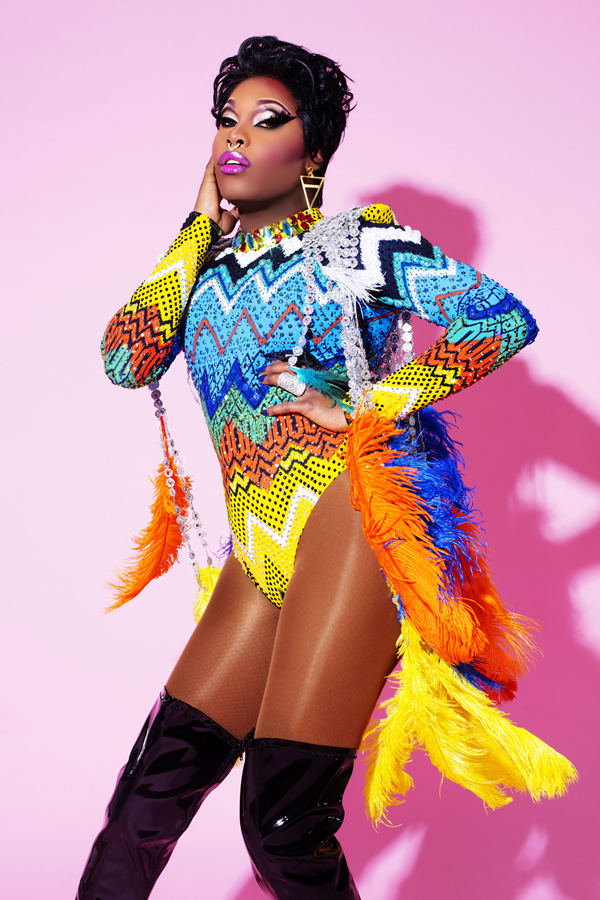
Asia O’Hara says Capital Pride audiences will see another side of her this weekend. (Photo courtesy Project Publicity)
a&e features
Your guide to D.C.’s queer New Year’s Eve parties
Ring in 2026 with drag, leather, Champagne, and more

With Christmas in the rear view mirror, we can turn our attention to ringing in a much-anticipated New Year with a slew of local LGBTQ parties. Here’s what’s on tap.
Pitchers
This spacious Adams Morgan bar is hosting the “Pitchers’ Perfect New Year’s Eve.” There will be a midnight Champagne toast, the ball drop on the big screens, and no cover, all night long. The bar doesn’t close until 4 a.m., and the kitchen will be open late (though not until close). All five floors will be open for the party, and party favors are promised.
Trade
D.C.’s hottest bar/club combo is leaning into the Shark motif with its NYE party, “Feeding Frenzy.” The party is a “glitterati-infused Naughty-cal New Year’s Even in the Shark Tank, where the boats are churning and the sharks are circling.” Trade also boasts no cover charge, with doors opening at 5 p.m. and the aforementioned Shark Tank opening at 9 p.m.. Four DJs will be spread across the two spaces; midnight hostess is played by Vagenesis and the two sea sirens sensuously calling are Anathema and Justin Williams.
Number Nine
While Trade will have two DJs as part of one party, Number Nine will host two separate parties, one on each floor. The first floor is classic Number Nine, a more casual-style event with the countdown on TVs and a Champagne midnight toast. There will be no cover and doors open at 5 p.m. Upstairs will be hosted by Capital Sapphics for its second annual NYE gathering. Tickets (about $50) include a midnight Champagne toast, curated drink menu, sapphic DJ set by Rijak, and tarot readings by Yooji.
Crush
Crush will kick off NYE with a free drag bingo at 8 p.m. for the early birds. Post-bingo, there will be a cover for the rest of the evening, featuring two DJs. The cover ($20 limited pre-sale that includes line skip until 11 p.m.; $25 at the door after 9 p.m.) includes one free N/A or Crush, a Champagne toast, and party favors (“the legal kind”). More details on Eventbrite.
Bunker
This subterranean lair is hosting a NYE party entitled “Frosted & Fur: Aspen After Dark New Year’s Eve Celebration.” Arriety from Rupaul Season 15 is set to host, with International DJ Alex Lo. Doors open at 9 p.m. and close at 3 p.m.; there is a midnight Champagne toast. Cover is $25, plus an optional $99 all-you-can-drink package.
District Eagle
This leather-focused bar is hosting “Bulge” for its NYE party. Each District Eagle floor will have its own music and vibe. Doors run from 7 p.m.-3 a.m. and cover is $15. There will be a Champagne toast at midnight, as well as drink specials during the event.
Kiki, Shakiki
Kiki and its new sister bar program Shakiki (in the old Shakers space) will have the same type of party on New Year’s Eve. Both bars open their doors at 5 p.m. and stay open until closing time. Both will offer a Champagne toast at midnight. At Kiki, DJ Vodkatrina will play; at Shakiki, it’ll be DJ Alex Love. Kiki keeps the party going on New Year’s Day, opening at 2 p.m., to celebrate Kiki’s fourth anniversary. There will be a drag show at 6 p.m. and an early 2000s dance party 4-8 p.m.
Spark
This bar and its new menu of alcoholic and twin N/A drinks will host a NYE party with music by DJ Emerald Fox. Given this menu, there will be a complimentary toast at midnight, guests can choose either sparkling wine with or without alcohol. No cover, but Spark is also offering optional wristbands at the door for $35 open bar 11 p.m.-1 a.m. (mid-shelf liquor & all NA drinks).
a&e features
Local, last-minute holiday gift ideas
Celebrate the season while supporting area businesses

The DowntownDC Holiday Market is bustling. Union Station is decked out with its annual Christmas tree. Washingtonians have wrapped their houses and apartment balconies with festive lights and holiday decorations. The holiday season is here. And with stockings to fill and empty space under the tree, Washington’s local shops and artists have plenty to offer.
Show your LGBTQ and D.C. pride with the Washington Blade’s annual holiday gift guide.
To embrace the holiday buzz: The Blanco Nwèl cocktail from Alchy Cocktails. This Caribbean eggnog is one of Alchy Cocktail’s seasonal holiday cocktails. The flavor profile is similar to coquito, a traditional Puerto Rican Christmas drink with a coconut base. As a queer and Caribbean-owned business, Alchy Cocktails has been based out of Washington since 2021. Blanco Nwèl is available in both cocktail ($24) and mocktail ($12) online and at a variety of holiday markets, including the Tingey Plaza Holiday Market, the Flea Market at Eastern Market, Union Station’s Main Hall Holiday Market, and more. ($24)
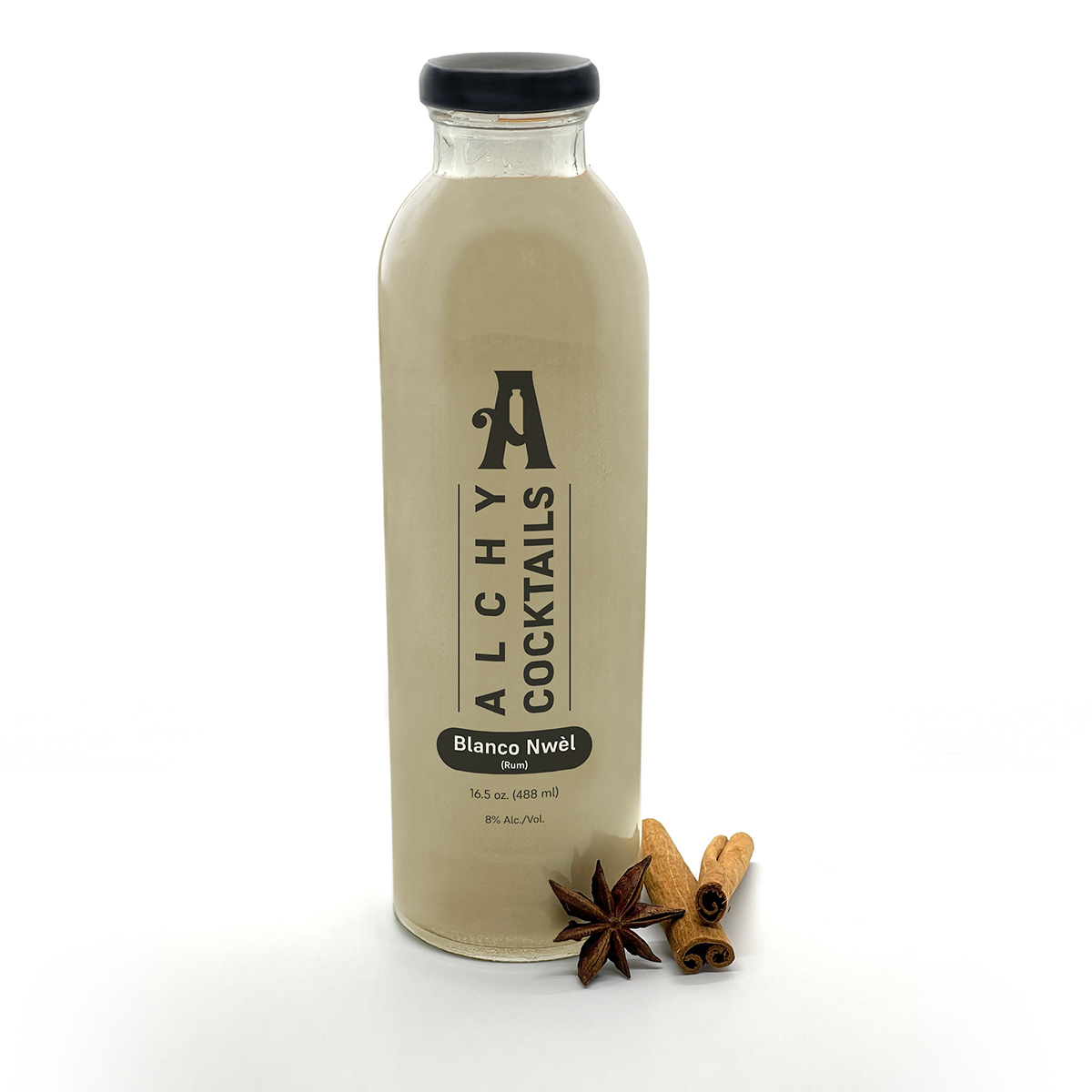
A spicy bite: Gordy’s Cajun Okra from Salt and Sundry. These spicy, tangy pickles pull on Southern Cajun-style flavors, packing a punch with paprika, cayenne, and more. Gordy’s is an LGBTQ-owned and Washington-based brand, making this gift an opportunity to support a local LGBTQ business straight from the jar. This pantry staple is available on Salt & Sundry’s website and at its locations in Union Market, Logan Circle, and its Georgetown holiday pop-up store. ($14)
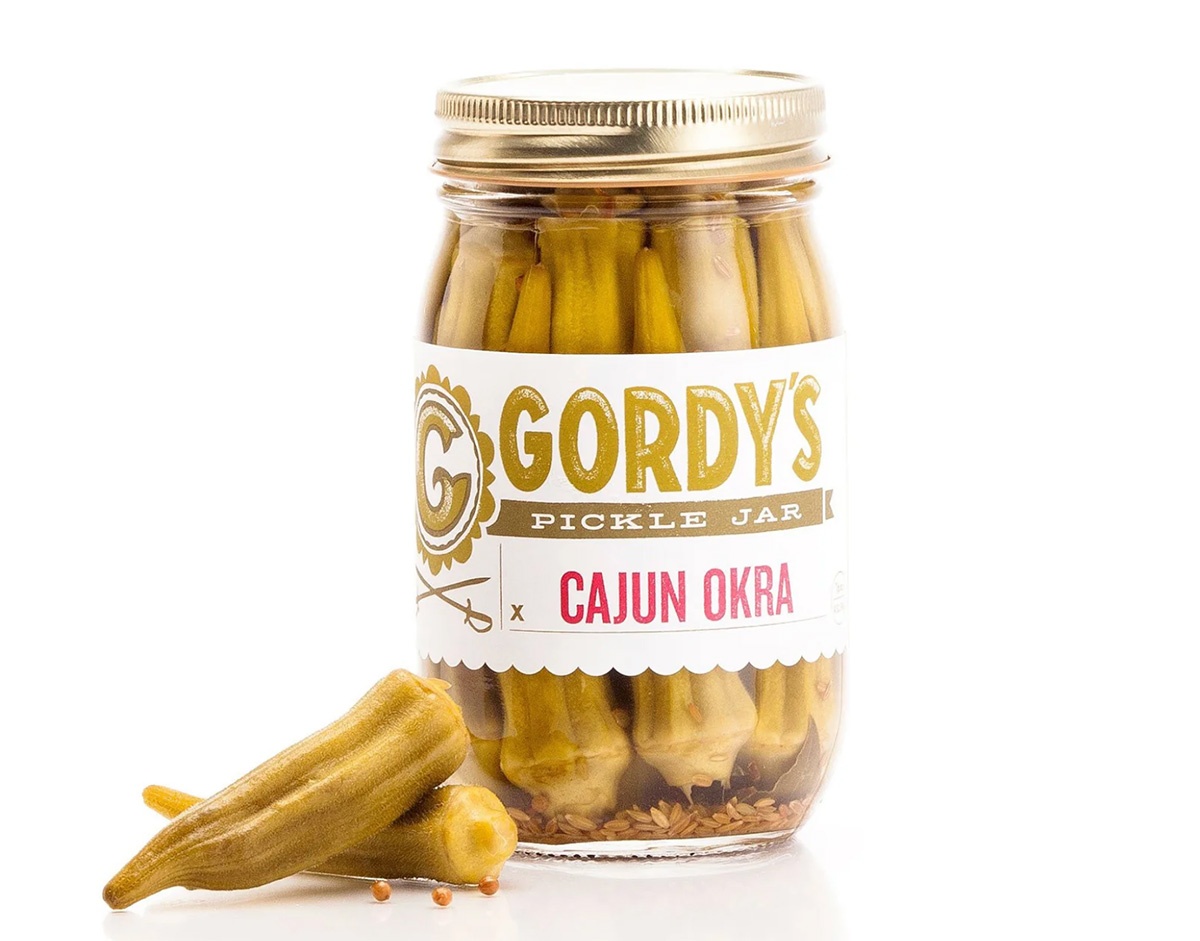

To celebrate Washington pride: The DC Landmark Tote Bag from The Neighborgoods. Native Washingtonians, visitors, friends and family alike will find something to love about this Washington-themed tote bag. Food trucks, the 9:30 Club, the Metro logo and pandas from the National Zoo are just some of the city’s landmarks depicted across the tote in a red, white, and blue color palette. The tote is a part of the DC Landmarks collection, which donates 10 percent of its sales to the American Civil Liberties Union. The Neighborgoods itself is a local, woman-owned business built out of a passion for screen-printing in 2013. The 100 percent cotton canvas tote is for sale online or at the DowntownDC Holiday Market. ($22)
To give friends and family their flowers: The Flowers Bandana from All Very Goods. This 100 percent cotton bandana was designed in Washington and hand printed in India. Its uniqueness comes in being covered with the faces of Black women, representing a “love letter to all women but especially Black women,” according to All Very Goods. The Black woman-owned and operated business, based out of Northwest Washington, has a mission to celebrate diversity and representation through its products. The bandana intends to give Black women their “flowers.” The Flowers bandana is available for purchase online. ($24)
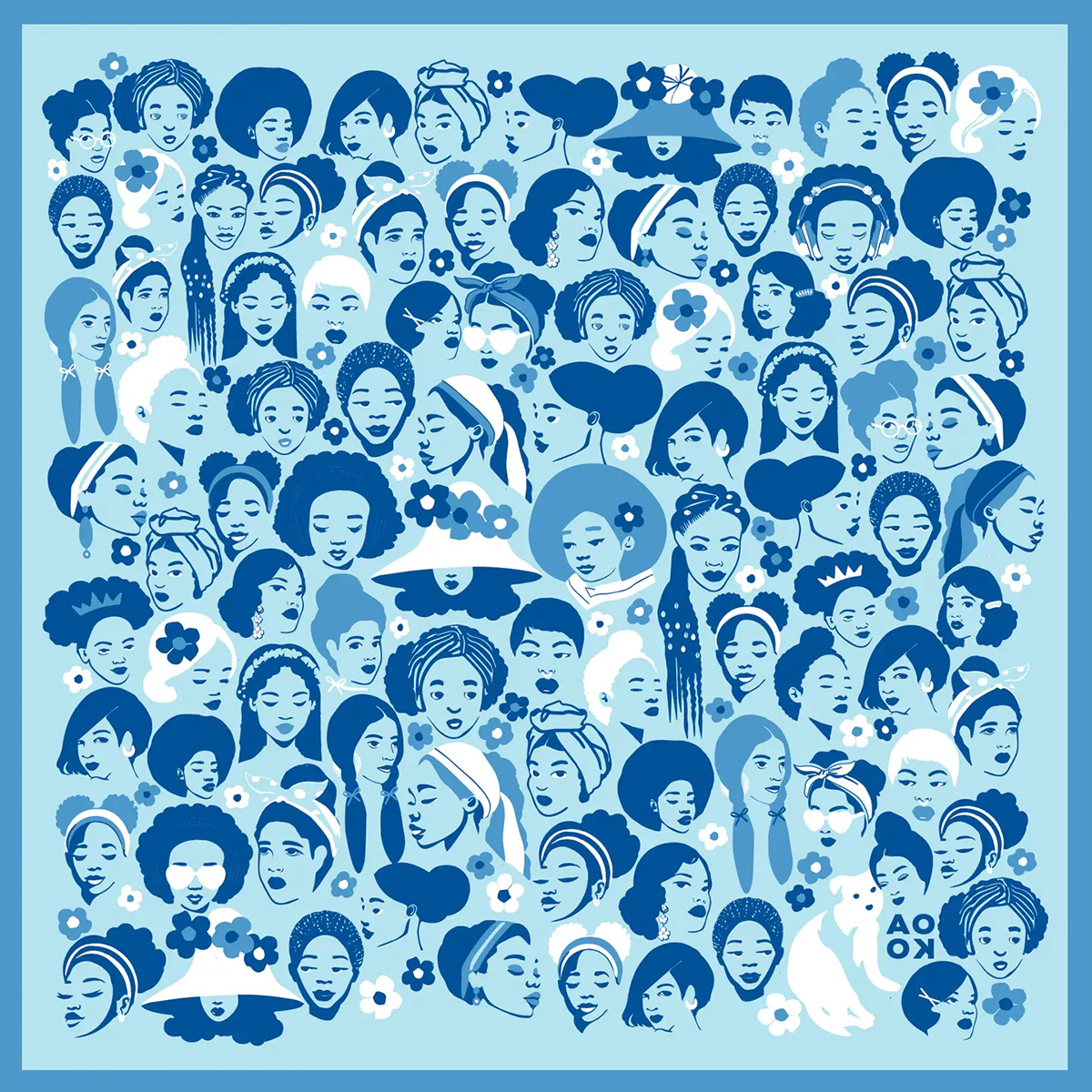
To unlock culinary creativity: The Curious Chef Gift Collection from Each Peach Market. This customizable collection of kitchen oddities — ranging from tinned fish to chili oil — is a quirky gift for the most inventive chefs. The collection is available in a Standard Santa, Extra Goodies and Super Holiday Size for up to $165. The Washington-based market, founded in 2013, permits customers to make the collection special by specifying what unique ingredients are packaged, including products made by local or LGBTQ brands. Each Peach Market offers assembly and pick up in-person at its Mount Pleasant shop and also offers local delivery and nationwide shipping via its website. ($85)
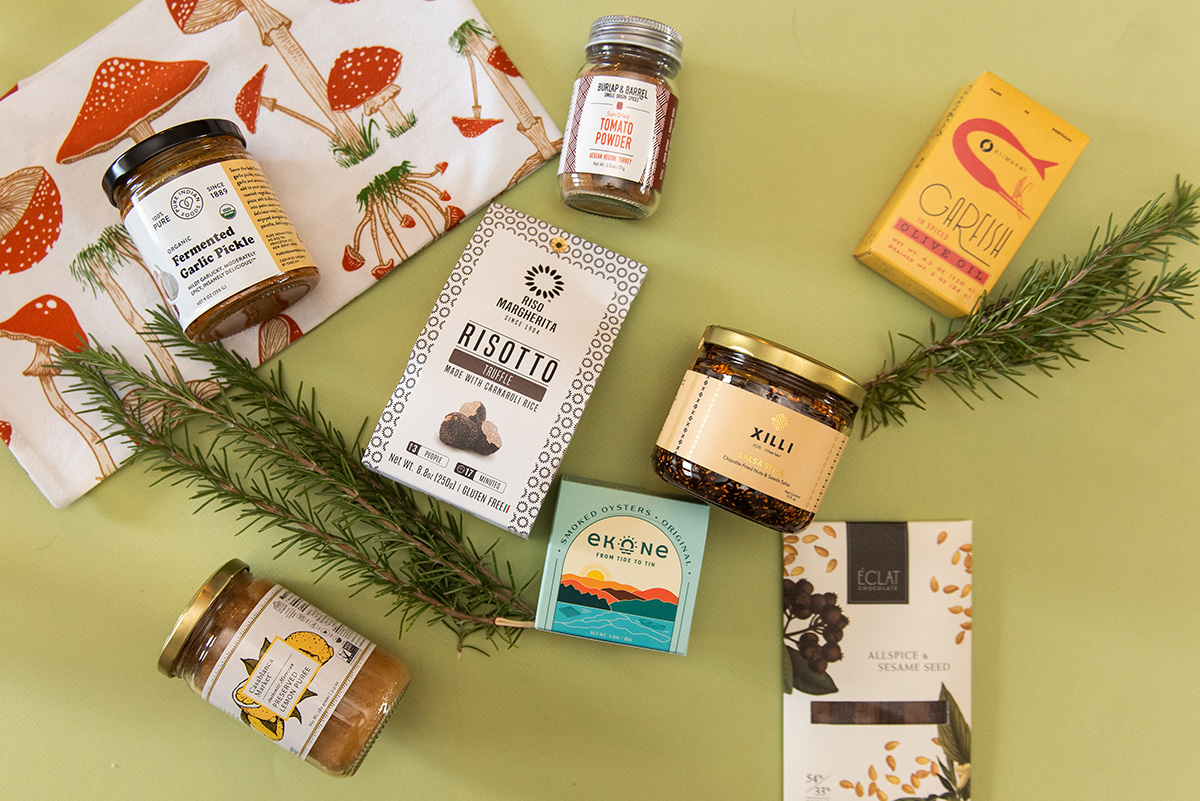
To give a touch of sweetness: The DC Landmark Chocolate Covered Oreo Holiday Cookies from Capital Candy Jar. Wrapped in a festive red bow, this box of nine cookies embraces love for Washington and the holiday season in one. Among the dark and milk chocolate covered cookies are images of the U.S. Capitol, the White House, the Lincoln Memorial, the Jefferson Memorial and festive hollies. The treat, packaged in a Hill East facility just a few blocks from the Capitol, is available for purchase online and at the DowntownDC Holiday Market. ($23.95)

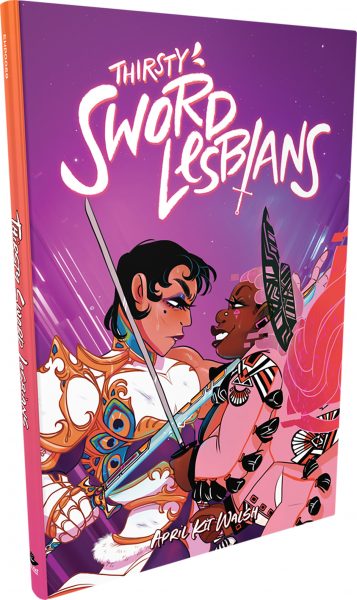
To celebrate queer gaming: Thirsty Sword Lesbians from Labyrinth Games & Puzzles. This roleplaying game embraces lesbian culture by unlocking a world of swords, romance, and battle. Ideal for group settings, the book presents a system of world building and character identities that are best brought to life by creative minds. Labyrinth, which has been a local Washington business for more than 15 years, celebrates non-digital fun through games and puzzles that connect the community. This gift is offered online and at Labyrinth’s Capitol Hill location. ($29.99)
To make a bold statement: The “Resist” T-shirt from Propper Topper. This locally screen-printed black tee features the Washington flag designed within a raised fist, symbolizing both Washington pride, and political resistance. The shirt is made exclusively by Propper Topper, a local Washington business that evolved from a hat shop to a gift store since opening in 1990. The tri-blend unisex shirt is available both for pickup at Propper Topper’s Cathedral Heights location and shipping via the online site. ($32)
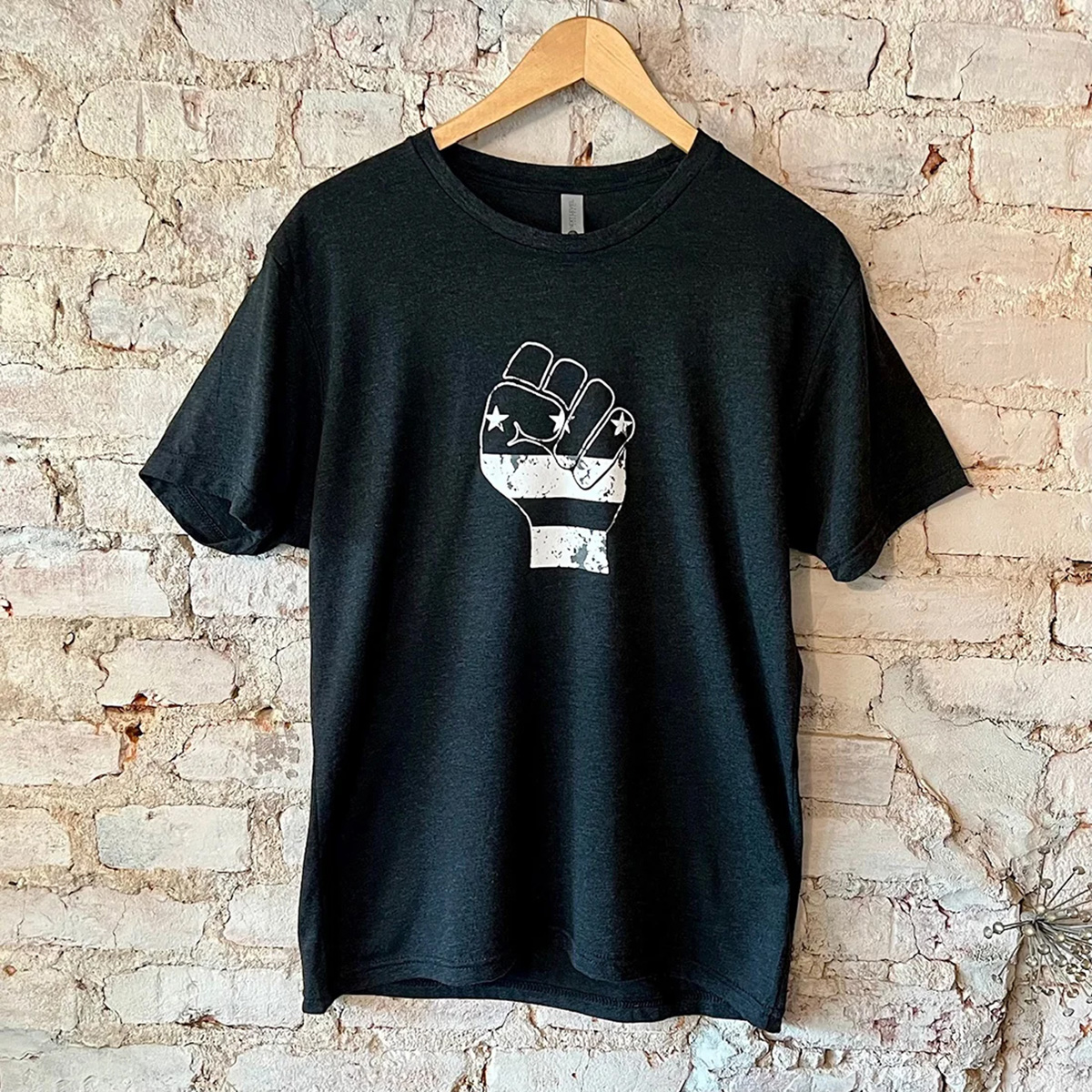
To keep it c(g)lassy: The Glass Ball earrings from Blue Moon Aquarius. Gifting can rarely go wrong when it comes to a new pair of earrings. The unique statement earrings — made of polymer clay, glass, and 18k gold plating over surgical steel — are hand cut, sanded and assembled in Washington, meaning each set is unique. Blue Moon Aquarius, a local brand, is known for its small batch jewelry and home decor designed with clay materials. Available in oxblood, hunter green, lavender, and bluestone color palettes, these earrings are available for purchase on Blue Moon Aquarius’ website and at the DowntownDC Holiday Market. ($48)
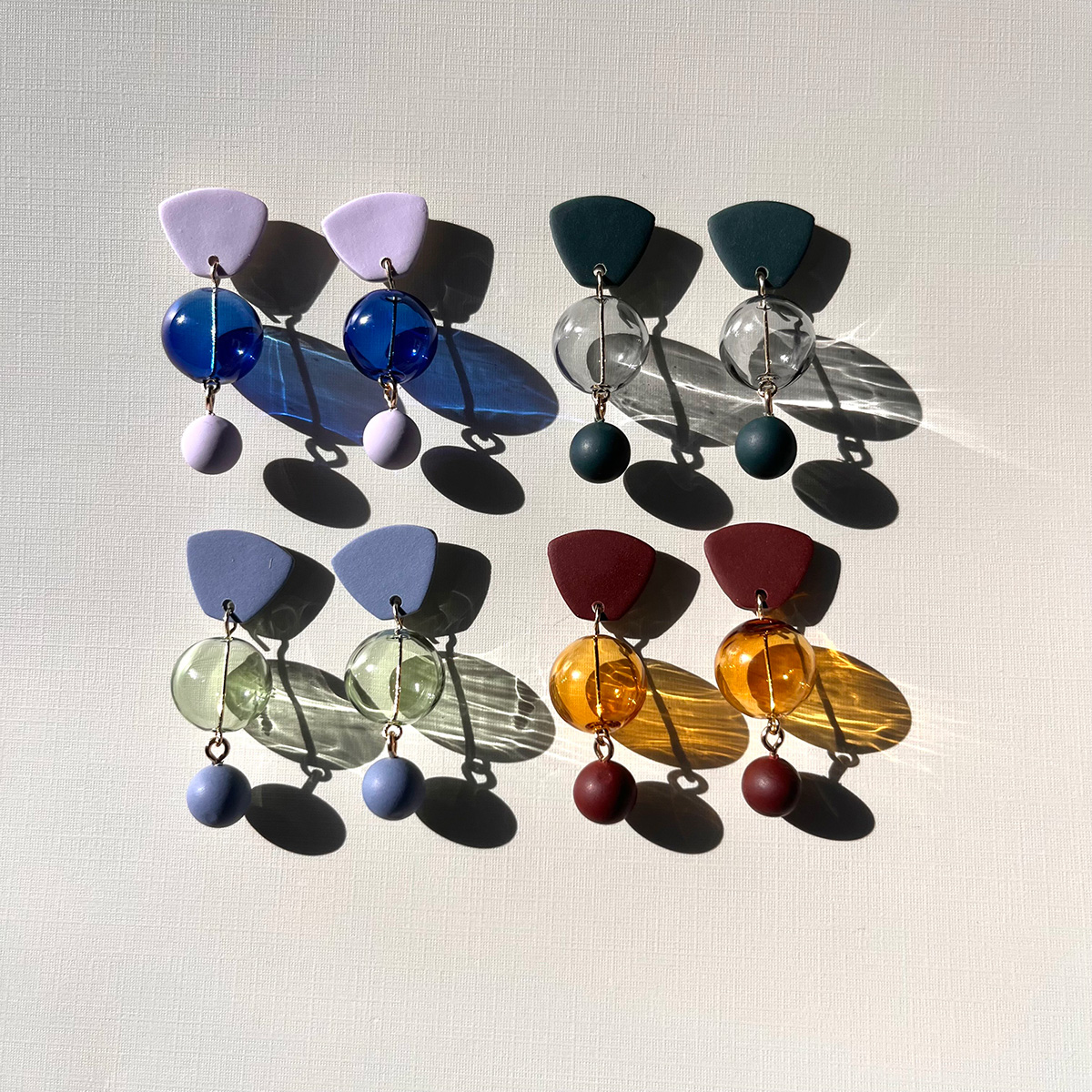
To elevate a holiday tea or charcuterie party: The Honey Flight: Tea Lover’s Selection from BannerBee. This local honey company presents the ideal gift to make cozying up with a cup of tea slightly more special. The Honey Flight contains three types of raw wildflower honey infused with fair trade Ugandan vanilla bean, chai spices, and locally sourced lemon thyme herb. The gift is also an opportunity to uplift a family company based in the Mid-Atlantic that offers all-natural, sustainable products. The flight is available online, at the DowntownDC Holiday Market or at the Arlington Courthouse and Dupont Farmers’ Markets. ($36)
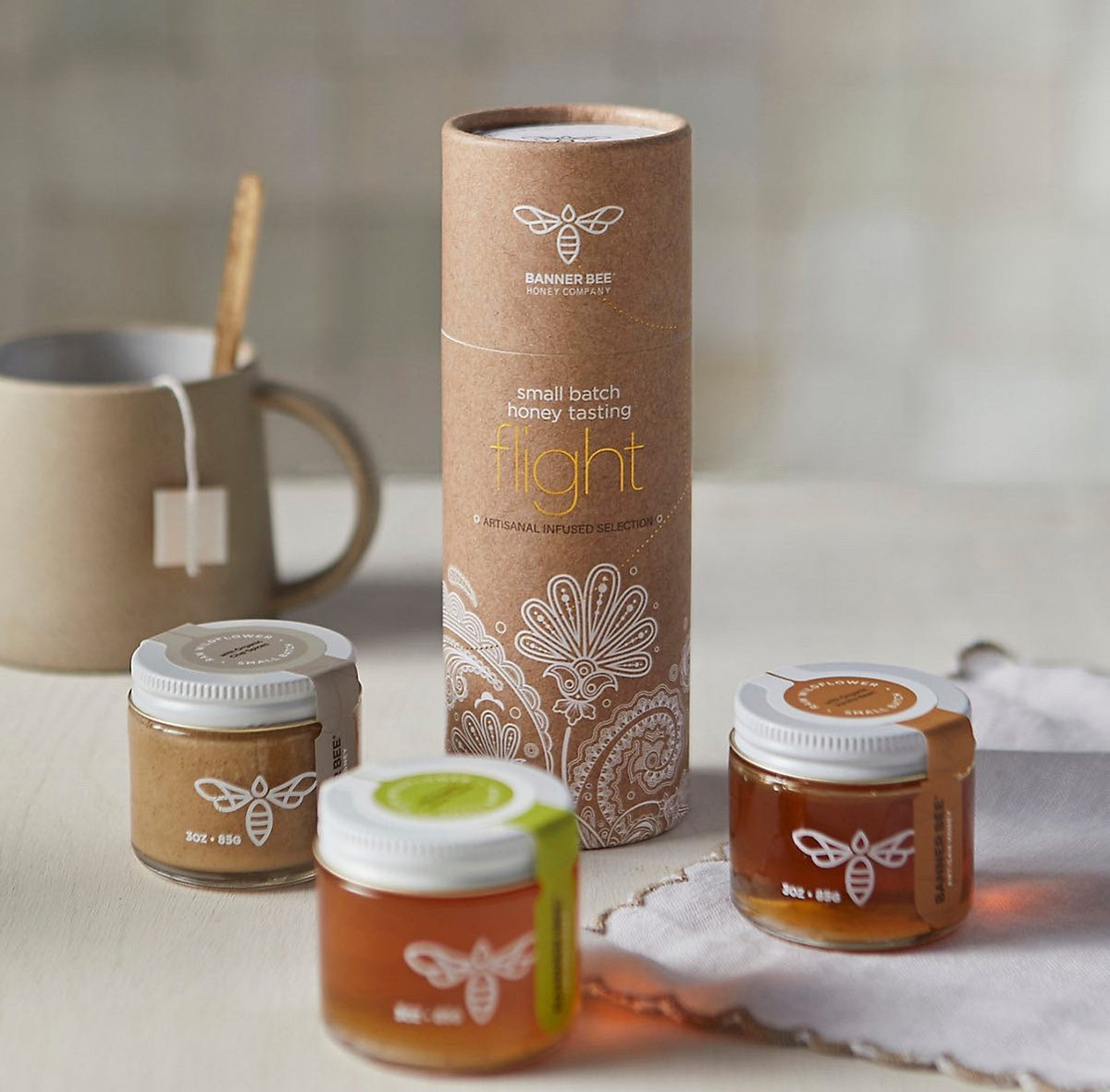
For Baltimore shoppers: If you’re in Charm City, don’t miss Balston Mercantile, opened by a gay couple in June. Their gorgeous shop in the Hampden neighborhood offers an array of unique, upscale finds, from barware and artwork to cookbooks and home decor and more. (849 W. 36th St.)
a&e features
Have yourself a merry John Waters Christmas
Annual holiday show returns to Alexandria and Baltimore
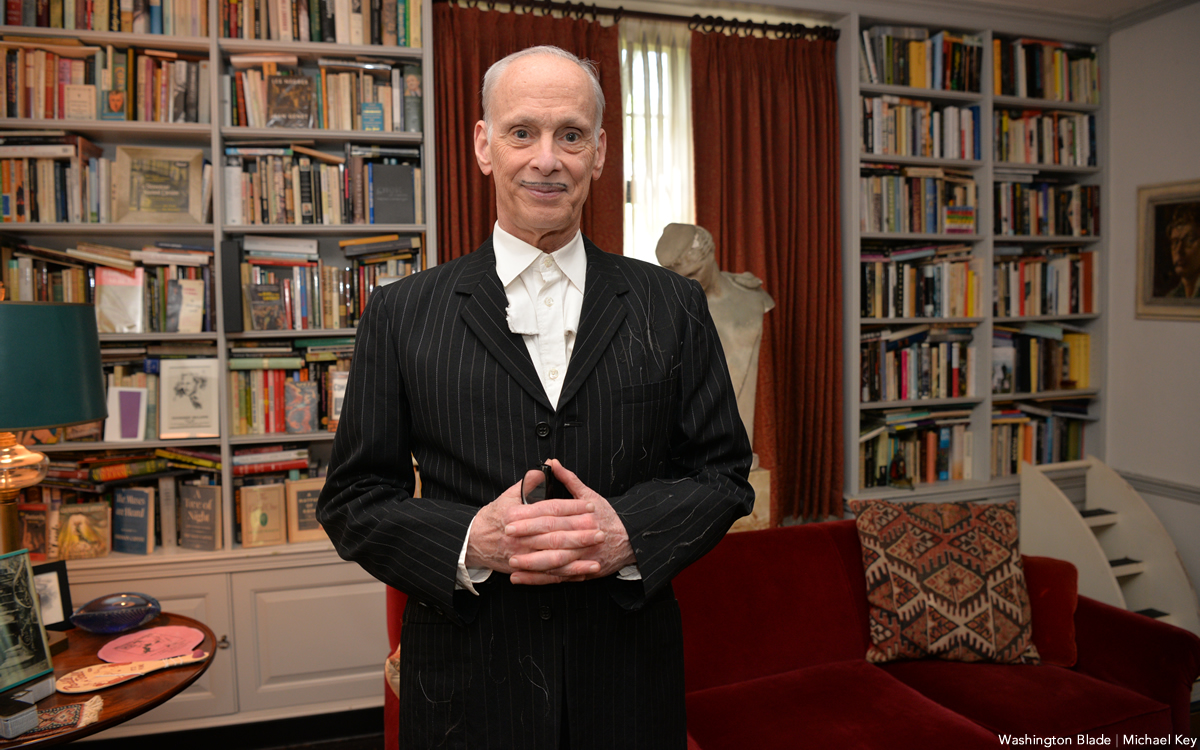
When it comes to iconic Christmas scenes in movies, none can top the tree-toppling tantrum thrown by cha-cha heels-deprived Dawn Davenport in John Waters’s fifth full-length feature “Female Trouble” from 1974. Therefore, it’s not surprising that Waters continues to make art out of Christmas, performing his spoken word Christmas tour in cities across the country. Waters has even more reason to celebrate with the release of his new red vinyl 7” single, a cover of Little Cindy’s “Happy Birthday Jesus (A Child’s Prayer)” on the A-side, and “A Pig Latin Visit From St. Nicholas” on the B-side. If you’re still looking for unique Christmas gifts, consider this record. As always, John was kind enough to make time for an interview in advance of his tour dates.
BLADE: John, in preparation for this interview with you, I went back and listened to Little Cindy’s original rendition of “Happy Birthday Jesus (A Child’s Prayer)” on your “A John Waters Christmas” CD.
JOHN WATERS: One thing I did, if you notice, I make the same stumble in my recording that she did in the original.
BLADE: It sounded to me like she got choked up.
WATERS: No, I think she just stumbles over a word, so I stumbled over the same word. It’s appropriation, insanely.
BLADE: Is this a song you first became aware of in your youth or when you were an adult?
WATERS: When I was doing the Christmas album, I had this friend named Larry Benicewicz. He was kind of my idea man with music. He knew every single old record. I would say to him, “Weird Christmas songs,” when we were doing a soundtrack, or a song about bears, or a song about this, and he would give me all these tapes. It was one of the ones he played for me. A lot of the songs I put in my movies and on my records, I did know as a kid. I did not know this one, but I immediately embraced it. I don’t think it’s campy. I think it really is spiritual in a weird way. My doing it makes it a novelty record. I am really for novelty records, and there aren’t any anymore. Why was there not a COVID novelty record? That’s insane. The dance “The Bug” that’s on the “Hairspray” soundtrack would be perfect for COVID.
BLADE: The thing that struck me was that for a Christmas song in the voice of a child, a kind of death pall hangs over it, with lines like, “If I was good you’d let me live with you” and “they nailed you to the cross, they wanted you to die.”
WATERS: All of it! When I see children at midnight mass kneeling in front of a nude man nailed to a cross, I feel like I’m at The Eagle! It is S&M, it’s creepy. I took the same cover (photo) from her record to parody and put my face on it. The same thing I did with The Singing Dogs last year when I covered (their version of) “Jingle Bells.” I’m really into novelty records. I love them and I’m trying to bring them back. I don’t expect anybody to ever play these records. Even The Singing Dogs one said on it, “Please do not play this record” [laughs]. And the flipside, the Pig Latin version, is almost impossible to listen to.
BLADE: I’m so glad you mentioned that. “A Pig Latin Visit From St. Nicholas” reminded me of the lost art of speaking in Pig Latin. I also recall watching the PBS series “Zoom” as an adolescent and learning to speak “ubbi dubbi,” a distant relative of Pig Latin. Do you think that the time is right for a Pig Latin or ubbi dubbi revival?
WATERS: Here’s the thing, I never could pick up any language, except Pig Latin. I’ve been in every foreign country. Foreign countries have given me money to learn to speak the language. I can never do it! But Pig Latin…my parents and other parents in the ‘50s spoke Pig Latin so kids couldn’t understand what they were saying. Then my mother taught it to me, and I used it. The hardest take to shoot in “Pink Flamingos” was not eating the dog shit. It was when the cast skipped, in one take, saying “E-way, are-yay e-they ilthiest-fay eople-pay in-hay e-they ole-hay ide-way orld-way.” We’re the filthiest people in the whole wide world in Pig Latin. We had to do so many takes so they could do it once without screwing it up. In “Polyester,” Edith (Massey) answers the phone, “ello-hay.” I did a photo piece where it was all subtitled in Pig Latin. Like “osebud-Ray” (from “Citizen Kane”) or in “Streetcar,” “ella-Stay!” [Laughs] All the iconic dialogue translated into Pig Latin. My assistant who helped me do it, had never heard of Pig Latin. She really got good at it because she lived in many foreign countries and can pick up languages. But it’s not that easy to do it correctly and read it. Your computer will translate into Pig Latin.
BLADE: AI understands Pig Latin?
WATERS: I guess that’s AI. It wasn’t 100% right, but it was close. I can speak it if I look at it, but just do a bit at a time. It was a challenge that no one would possibly care about or want to do.
BLADE: I think you pulled it off very well.
WATERS: If you want people to leave on Christmas morning, you put it on. That’s how you get your guests to leave. It’s time to go.
BLADE: Ood-gay i-bay! How did your relationship with record label Sub Pop, which released 2021, 2022, 2024, and new 2025 holiday singles, come about?
WATERS: I believe the first thing I did for them was “Prayer to Pasolini.” They came to me through Ian Brennan. He’s won a couple Grammys for World Music, but he is also is one of my agents who does the Christmas tour and a lot of my shows, anything with music. He helped me arrange each one of the songs. He had a relationship with Sub Pop. It was perfect. My friends in Baltimore, (the band) Beach House, have had huge success.
BLADE: That’s right, they’re on Sub Pop!
WATERS: Yes! I’m happy to be on it. I’ve even been to the warehouse and posed for pictures like Jackie Suzanne used to do.
BLADE: Is there any chance that “A John Waters Christmas” might be reissued on vinyl by Sub Pop?
WATERS: No. It’s such a nightmare to get the rights and to renew them. You have to find the publisher and the writer, and they usually hate each other. It doesn’t matter if it’s obscure or famous, it’s hard to get. You have to make the deal. The singer doesn’t get anything unless they play it on the radio. It would be so complicated legally, and there would be such a [laughs] tiny audience for it. I hope it will come out again. The same thing with the one for Valentine’s Day. I had two of them that did quite well when they came out; “A Date With John Waters and “A John Waters Christmas.” The “John Waters Christmas” album is still the soundtrack that plays whenever I’m doing my spoken word Christmas show as people are entering the theater.
BLADE: Aside from your annual Christmas show tour, what else do you do for the holidays now, and are there any traditions that you’ve carried over from your family?
WATERS: Certainly! I have two sisters, my brother’s widow, and me, so there are four and we take turns each year to have the Christmas dinner. Mine was last year. An entire sit-down dinner. Mom’s China, the silverware, the entire full dinner. It’s pretty traditional. I don’t have a Christmas tree, but I do decorate the electric chair from “Female Trouble.” That is a tradition in my family. We do have Christmas decorations, but they’re usually weird ones that fans sent me. I have one with Divine knocking over the Christmas tree, and the Christmas tree lights up, all sorts of amazing things. There is definitely a tradition here that might be a little altered, but it is definitely a tradition. I used to have a giant party every year, but COVID ended that. I still wouldn’t want 200 people in my house breathing right now.
BLADE: I was looking at your tour schedule and wondered if there are any new cities in which you’ve never performed the John Waters Christmas show that have been added to this year’s schedule?
WATERS: I don’t think there’s a city in America in which I haven’t done one show! The only places I haven’t been to are Hawaii and Alaska. I could do it there, but it’s too long on a tour. I can’t think of a city I haven’t played in in America over the last 50 years. The Christmas show is completely different every year. It doesn’t matter if you saw it last year.

